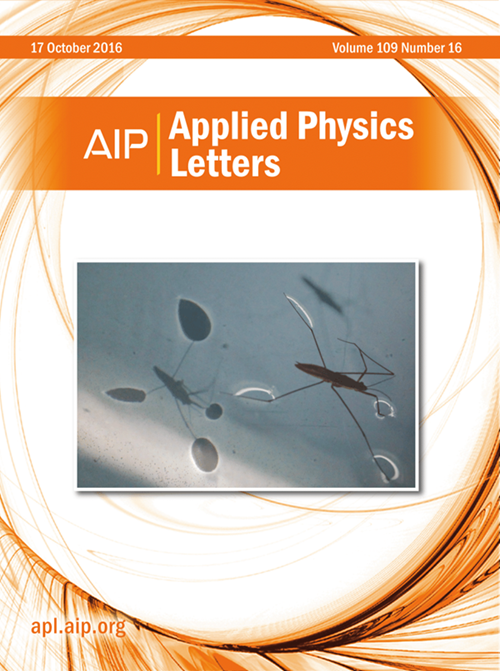低温退火欧姆接触到超薄algan /GaN异质结构,无二维电子气体
IF 3.5
2区 物理与天体物理
Q2 PHYSICS, APPLIED
引用次数: 0
摘要
我们研究了低温退火欧姆接触到超薄algan /GaN异质结构,没有二维电子气体(2DEG),具有极高的片电阻,为~ 1012 Ω/□。通过金属沉积和600℃低温退火形成欧姆触点,接触电阻可降至0.74 Ω mm。为了评估在欧姆金属作用下AlGaN/GaN的片电阻ρs、片电子浓度ns和电子迁移率μs,我们制作并表征了多探头霍尔器件。结果发现,在1012 cm - 2范围内,ρs显著降低至~ 600 Ω/□,ns和μs之间的关系表明,在AlGaN/GaN异质界面处形成了2DEG。比接触电阻率对ns和测量温度的依赖都很弱,可以通过形成的2DEG和欧姆金属之间的直接隧道来很好地解释。此外,发现去除欧姆金属后的薄片电阻恢复到初始值~ 1012 Ω/□。一种可能的解释是极化掺杂发生在欧姆金属下。本文章由计算机程序翻译,如有差异,请以英文原文为准。
Low-temperature-annealed Ohmic contacts to ultrathin-AlGaN/GaN heterostructures with no two-dimensional electron gas
We investigated low-temperature-annealed Ohmic contacts to ultrathin-AlGaN/GaN heterostructures with no two-dimensional electron gas (2DEG), which have extremely high sheet resistances of ∼1012 Ω/□. The Ohmic contacts are formed by metal deposition and low-temperature annealing at <600 °C, where a contact resistance down to ≃0.74 Ω mm can be realized. In order to evaluate the sheet resistance ρs, the sheet electron concentration ns, and the electron mobility μs of the AlGaN/GaN under the Ohmic-metals, we fabricated and characterized multi-probe Hall devices. As a result, we find ρs significantly decreased down to ∼600 Ω/□, ns in the 1012 cm−2 range, and μs>1000 cm2/V-s under the Ohmic-metals, where the relationship between ns and μs suggests that a 2DEG is formed at the AlGaN/GaN heterointerface. The specific contact resistivity weakly depends on both ns and the measurement temperature, being well explained by direct tunneling between the formed 2DEG and the Ohmic-metal. Furthermore, it is found that the sheet resistance after Ohmic-metal removal returns to the initial value of ∼1012 Ω/□. One possible hypothesis to explain this is that polarization doping takes place under the Ohmic-metals.
求助全文
通过发布文献求助,成功后即可免费获取论文全文。
去求助
来源期刊

Applied Physics Letters
物理-物理:应用
CiteScore
6.40
自引率
10.00%
发文量
1821
审稿时长
1.6 months
期刊介绍:
Applied Physics Letters (APL) features concise, up-to-date reports on significant new findings in applied physics. Emphasizing rapid dissemination of key data and new physical insights, APL offers prompt publication of new experimental and theoretical papers reporting applications of physics phenomena to all branches of science, engineering, and modern technology.
In addition to regular articles, the journal also publishes invited Fast Track, Perspectives, and in-depth Editorials which report on cutting-edge areas in applied physics.
APL Perspectives are forward-looking invited letters which highlight recent developments or discoveries. Emphasis is placed on very recent developments, potentially disruptive technologies, open questions and possible solutions. They also include a mini-roadmap detailing where the community should direct efforts in order for the phenomena to be viable for application and the challenges associated with meeting that performance threshold. Perspectives are characterized by personal viewpoints and opinions of recognized experts in the field.
Fast Track articles are invited original research articles that report results that are particularly novel and important or provide a significant advancement in an emerging field. Because of the urgency and scientific importance of the work, the peer review process is accelerated. If, during the review process, it becomes apparent that the paper does not meet the Fast Track criterion, it is returned to a normal track.
 求助内容:
求助内容: 应助结果提醒方式:
应助结果提醒方式:


